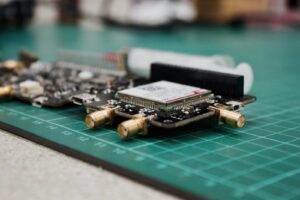The Role of IoT in Predictive Maintenance
IoT-based maintenance scheduling is transforming how industries manage equipment and machinery, moving away from traditional time-based maintenance to a more precise, condition-based approach. By utilizing IoT (Internet of Things) technology, maintenance schedules can be developed based on the actual usage and condition of the equipment, rather than on arbitrary time intervals. This shift not only enhances efficiency but also reduces costs and minimizes downtime.
In industries where equipment reliability is critical, such as manufacturing in Saudi Arabia and the UAE, IoT-based solutions provide real-time data that allows for predictive maintenance. Sensors attached to machinery continuously monitor various parameters, such as temperature, vibration, and usage hours. This data is then transmitted to a central system where it is analyzed to predict potential failures before they occur. By anticipating issues, companies can schedule maintenance only when it is truly necessary, avoiding unnecessary service interruptions and extending the lifespan of their equipment.
Moreover, IoT technology enables a more detailed understanding of equipment performance. Instead of relying on manual inspections, which can be time-consuming and prone to error, IoT sensors provide continuous and accurate data. This information can be used to fine-tune maintenance schedules, ensuring that each piece of equipment receives the care it needs based on its unique operating conditions. This level of precision is particularly valuable in regions like Riyadh and Dubai, where high-tech industries and smart city initiatives demand the utmost efficiency and reliability from their infrastructure.
Benefits of Condition-Based Maintenance with IoT
Implementing IoT-based maintenance scheduling offers significant advantages over traditional maintenance strategies. One of the most notable benefits is the ability to perform maintenance only when needed, based on real-time data from IoT sensors. This approach, known as condition-based maintenance, eliminates the guesswork from maintenance planning, leading to cost savings and more efficient use of resources.
For example, in industries such as oil and gas, where equipment failure can have severe consequences, condition-based maintenance ensures that machinery is serviced at optimal times, preventing breakdowns that could lead to costly downtime or even environmental hazards. By relying on data-driven insights, companies can prioritize maintenance activities, focusing on critical equipment that shows signs of wear or performance degradation. This proactive approach not only enhances safety but also improves overall operational efficiency.
In addition, IoT-based maintenance scheduling can be integrated with other smart technologies, such as artificial intelligence and machine learning, to further enhance predictive capabilities. These technologies can analyze historical data, identify patterns, and make more accurate predictions about when maintenance will be required. This integration is particularly valuable in fast-paced environments like those found in Dubai’s advanced manufacturing sector, where the ability to quickly adapt to changing conditions is essential for maintaining a competitive edge.
Challenges and Future Directions in IoT-Based Maintenance
While IoT-based maintenance scheduling offers numerous benefits, it also presents challenges that must be addressed to fully realize its potential. One of the primary challenges is data security. As IoT devices generate vast amounts of data, ensuring that this information is securely transmitted and stored is critical. Cybersecurity threats pose a significant risk, particularly in industries where sensitive operational data is involved. Companies must invest in robust security measures to protect their IoT infrastructure and maintain the integrity of their maintenance schedules.
Another challenge is the initial cost of implementing IoT-based systems. While the long-term savings and efficiency gains are substantial, the upfront investment in sensors, data management systems, and integration with existing infrastructure can be significant. However, as IoT technology continues to evolve and become more affordable, the barriers to adoption are expected to decrease, making it accessible to a wider range of industries.
Looking to the future, the development of IoT-based maintenance scheduling is likely to continue advancing, with innovations in sensor technology, data analytics, and artificial intelligence driving further improvements. These advancements will enable even more precise and efficient maintenance strategies, reducing costs, extending equipment life, and enhancing overall operational performance. For industries in Saudi Arabia, the UAE, and beyond, embracing IoT-based maintenance is not just a trend but a necessity for staying competitive in an increasingly connected world.
—
#IoTMaintenance #PredictiveMaintenance #IndustrialIoT #ConditionBasedMaintenance #SmartMaintenance #EquipmentManagement













